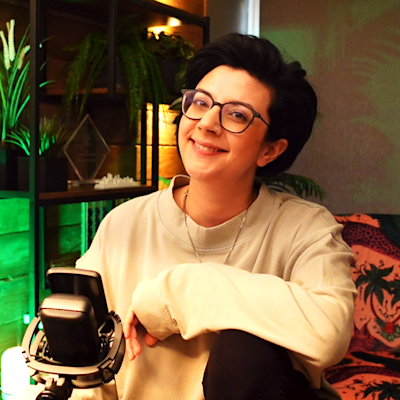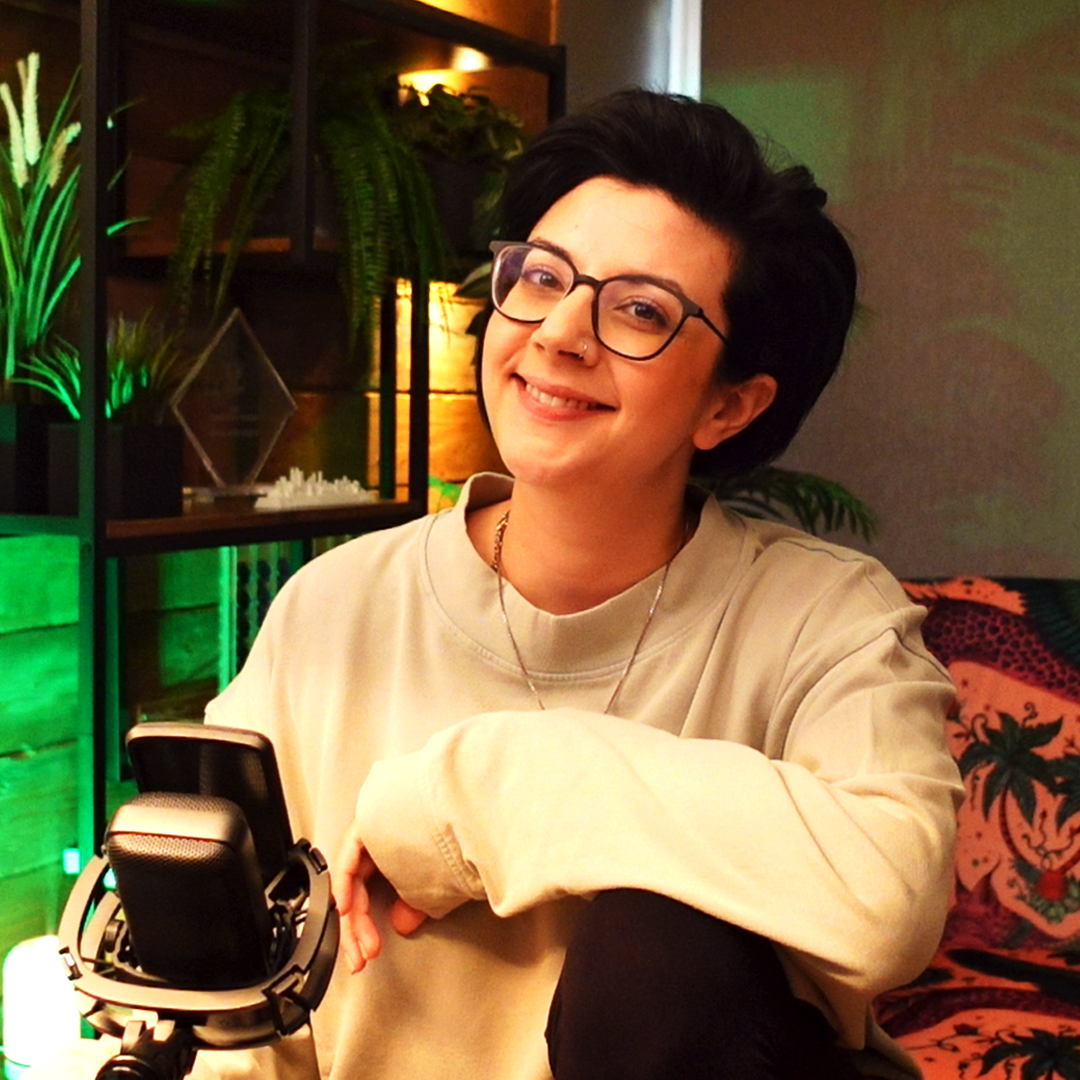Learn about what led Salma to DevRel and how she accidentally increased engagement in the Contentful Community by 200% on her first day.
⚠️ This post is over two years old and may contain some outdated technical information. Please proceed with caution!
After navigating a varied career path — including teaching music and performing musical comedy — Salma, or @whitep4nth3r as she has come to be known across the vast interwebs, joined our DevRel team at Contentful in January 2021. 🎉 We managed to catch Salma amidst her busy onboarding schedule to learn about what led her to developer relations and how she accidentally increased engagement in the Contentful Community Slack by 200% on her first day at Contentful.
Hello, Salma! We’re thrilled to have you on the team! How did you get into tech?
There are four chapters to my journey in tech.
I’ll start with the story of my earliest memory in front of a computer. There was an old Commodore 64 machine kicking around my house in the 1980s — you know, the type of thing where you loaded a cassette tape into a strange contraption hooked up to a chunky computer keyboard. After pressing play on the cassette player, you had to literally go outside and play because it would take about an hour before the game was actually playable.
I remember there was a four-inch thick programming manual that came with this C64, and during my early days of learning to read, I decided to explore it.
I was around six years old at the time, and to cut an increasingly (an unnecessarily) long story short, I remember sitting in front of that machine for hours at a time, meticulously copying symbols from the manual (only recently did I learn I was writing BASIC), character by character, into a fascinating blue terminal screen.
And MAGIC happened! I made a ball bounce across the screen! I printed patterns! I made coloured stripes! I could do ANYTHING! I was hooked.
But this was 1991, and the internet wasn’t a thing for most people yet. I didn’t even know how to articulate that I really, really, really wanted to explore this. I probably didn’t even have the word “programming” in my vocabulary yet; and, I had no idea what I was doing. But I did know that I was incredibly entranced by the whole experience.
What happened after you mastered programming in BASIC at the age of six?
At this point in my life I had already gotten heavily into learning music, so this took over. I don’t think it’s a coincidence that my degree is in music composition. There are so many similarities between the way I write music and code. Both are motif based. Short, reusable snippets of code are like short, reusable musical motifs.
The second chapter of my journey into tech happened in 1998 at the dawn of the dial-up home internet connection. The internet was just as fascinating to me as writing BASIC on a C64. Information was everywhere, communication with friends was no longer confined to a landline telephone conversation and I discovered the joy of building websites with the now-defunct GeoCities.
My first website had all the bells and whistles of a website built in the 90s: a visitor counter, a guest book, terribly inaccessible animations, an abundance of #0000FF (also known as “internet blue”) and lots of personality. In fact, I am so fond of the nostalgia of the internet in the 90s that I recently completed a frontend challenge where I recreated the look and feel of a GeoCities website entirely in CSS. The good thing about this version is that it’s responsive and accessible!
With limited resources to really come to grips with programming at the time, I continued to pursue music, and went to study music composition at the Royal Northern College of Music in Manchester.
But my tech pursuits didn’t stop there. As I got more and more into music technology and production, I moved away from Windows and embraced Macs. And, back then, iMacs came bundled with another deprecated piece of software: iWeb.
At this point, I started experimenting with iWeb to build websites. iWeb was a drag-and-drop website builder. If you used images for most of the elements on the page, and iframes that sourced text files for dynamic content, you could end up with a pretty snazzy looking result! (If you ignored the fact that the page wasn’t accessible or responsive.) This is also how I gained some skills in graphic design.
What happened after you graduated?
Being a recent music graduate, paid work was few and far between. So I made a little bit of a living designing album artwork and complementary websites (using iWeb) for my musician friends, which were hosted in strange places and edited by uploading file changes via an FTP file server — all while I recorded and released an album on Spotify with my folk band.
You would never believe that, at the time of this interview, this website I built using iWeb is still live on the internet.
I haven’t inspected the code to see how it compares to modern web standards. I’m too afraid.Tell us about your first job in development
I’ll skip over the few years that involved becoming a qualified music teacher, teaching kids how to play in rock bands and gigging as a musical comedian, to when I abruptly decided to quit teaching altogether and found myself working in a call center.
Through a series of serendipitous events, my graphic design experience led me to what became my first development role for a small magazine website, which operated above a furniture shop in a tiny northern UK village.
The three previous chapters in tech had given me some limited experience, but I managed to convince the one “IT guy” there (he was responsible for the infrastructure, backend, frontend and CMS) to take me under his wing. I was really fortunate to be able to learn on the job.
It’s so important to have a mentor. Whether you’re learning on the job or learning on your own, having someone to talk with about programming problems is absolutely invaluable. After all, programming isn’t necessarily about writing code. It’s about solving problems and building things for real people to use.
How did your career in tech evolve from there?
I’ve worked on a variety of different software products, including global ecommerce platforms, SaaS startups, mobile apps and, most recently, at a product agency in Manchester, UK.
I think the experience I had in graphic design greatly influenced my choice to specialize in frontend technologies. Due to my teaching and leadership experience before my final journey chapter, I moved on to working as a tech lead quite early on in my tech career. I’ve been involved in a lot of backend technologies and architecture for some time, too.
2020 was a strange year for everyone. And in that strange year, I discovered that I quite enjoyed streaming live coding on Twitch. Through building a community around my Twitch channel, I was fortunate to be introduced to the world of DevRel. I didn’t even know it existed until a few months ago.
I feel very lucky to have found my first DevRel role at such a welcoming company that builds a product that makes frontend applications so easy to build — something I have always advocated for.
Finally — how did you increase engagement in the Contentful Community Slack by 200% on your first day?
I’m a growth hacker! An innovator!
… I pressed the wrong button and accidentally enabled two-factor authentication for all c. 5,000 members of the Contentful Community Slack. And now I am fondly known as the team security champion. 🚨
Great work! Any final words?
Build stuff, learn things, love what you do.
If you’d like to stay up to date with what’s happening in Salma’s world, find her on Twitch and in the rainy suburbs of Manchester, UK. Or join the Contentful Community Slack — just make sure you’re on top of your security. 😉

Salma Alam-Naylor
I'm a live streamer, software engineer, and developer educator. I help developers build cool stuff with blog posts, videos, live coding and open source projects.
